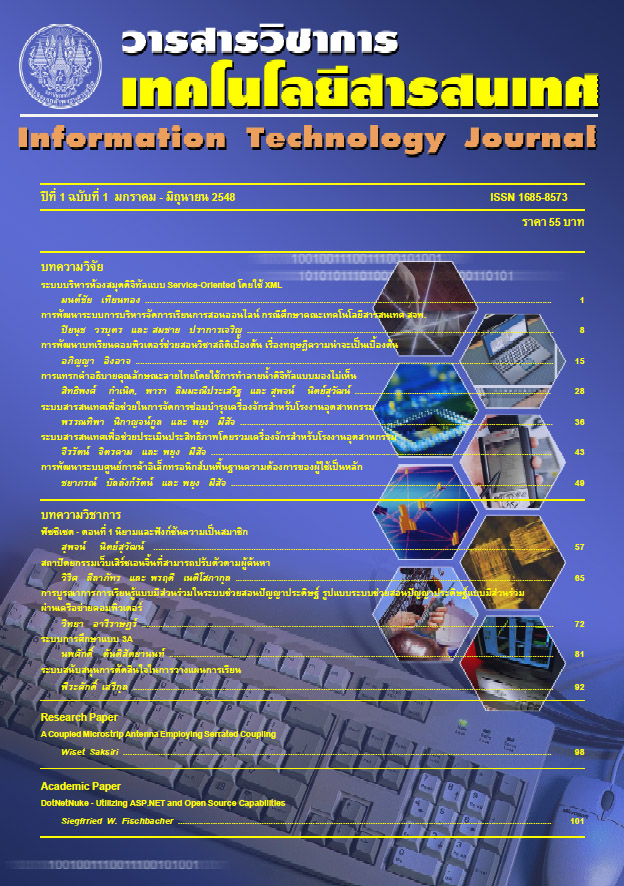DotNetNuke – Utilizing ASP.NET and Open Source
Main Article Content
Abstract
In late 2001 and early 2002 many programmers eagerly awaited the arrival of the new Visual Studio 2002. VS 2002 was a major jump from Visual Studio 6.0 as it a moved away from tradition Windows API manipulation toward the implementation of the newer .NET-based APIs. Microsoft warned developers the COM-based APIs were now being phased out. It was a disappointing time for many developers, all those years of learning the Windows APIs (User, GDI and Kernel) were now basically a waste of time and we had a long road
ahead. The many tweaks and hacks we had worked out were now defunct but in return Microsoft was offering a radical shift from workstation computing to distributed computing, the benefits were being hailed as ground-breaking. Part of this strategy included a major revamp of their Visual Studio. The newer .NET version was to be more Internet-centric and was to look toward the development of remote server based solutions. Some other major changes included changes to languages such as VB.NET, which were now to follow object orientated methods more closely, more extensive use of XML, added languages such as C#, mobile device support and, of course, the introduction Web Services (SOAP). VS 2002 was probably the most exciting advancement since the jump from a 16 to 32-bit environment in Visual Studio 4.0., but developers had a lot to learn. One of the side benefits of this whole process however, was the development of a new open source portal system named DotNetNuke. In this article I would like to showcase this new portal and well as some of its benefits of its underlying framework (i.e. NET)
ahead. The many tweaks and hacks we had worked out were now defunct but in return Microsoft was offering a radical shift from workstation computing to distributed computing, the benefits were being hailed as ground-breaking. Part of this strategy included a major revamp of their Visual Studio. The newer .NET version was to be more Internet-centric and was to look toward the development of remote server based solutions. Some other major changes included changes to languages such as VB.NET, which were now to follow object orientated methods more closely, more extensive use of XML, added languages such as C#, mobile device support and, of course, the introduction Web Services (SOAP). VS 2002 was probably the most exciting advancement since the jump from a 16 to 32-bit environment in Visual Studio 4.0., but developers had a lot to learn. One of the side benefits of this whole process however, was the development of a new open source portal system named DotNetNuke. In this article I would like to showcase this new portal and well as some of its benefits of its underlying framework (i.e. NET)
Article Details
Section
Academic Paper


